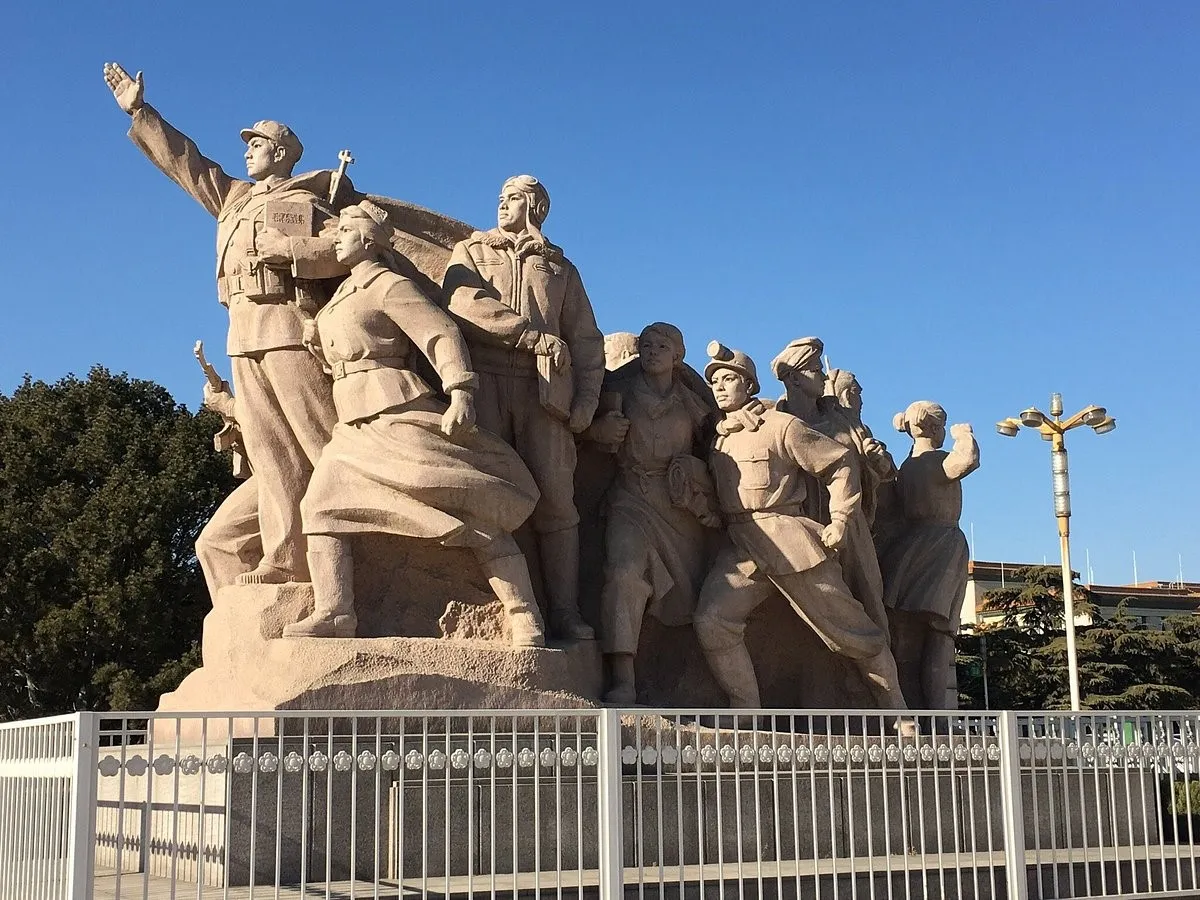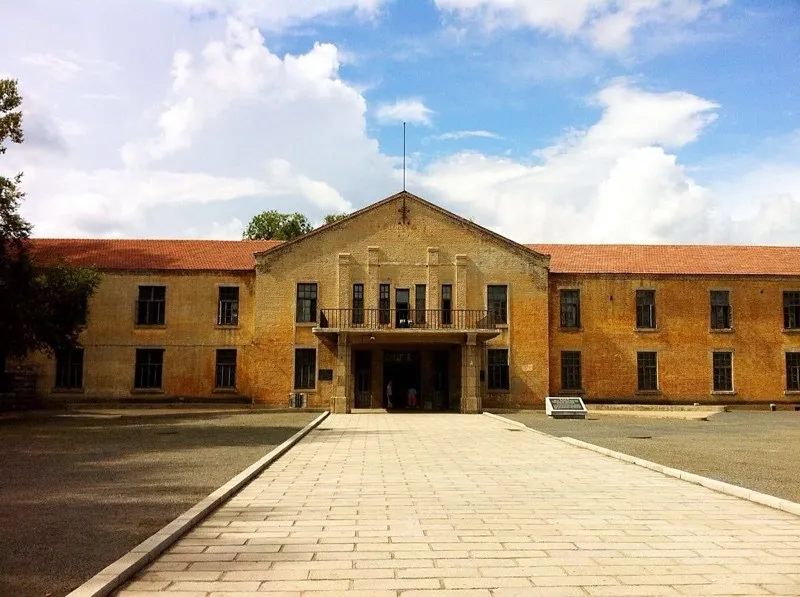
Hey Travelers, Ready for a Spooky Adventure? Welcome to China’s eerie side! We’ve been roaming around dark tourist spots for over five years, and China? Well, it’s got some of the creepiest. From the chilling Unit 731 Museum to ancient tragedies, we’re taking you on a suspense-filled tour of China’s dark tourism. Fasten your seatbelts; it’s going to be a haunting ride!
The first stop was Unit 731 Museum in Harbin. This place is straight out of a horror movie. Think of a World War II lab where human experiments were the norm. Gruesome, right? The museum showcases the cruel experiments, from frostbite tests to bio-warfare trials. It’s heavy and heart-wrenching but a must-visit for understanding this dark slice of history.

Next up, Nanjing. Here, the Nanjing Massacre Memorial Hall reminds us of the brutal killing of around 300,000 civilians by Japanese forces in 1937. The hall’s exhibits are a stark reminder of this brutal chapter. It’s a powerful place, echoing the resilience of the Chinese spirit.
In Beijing’s heart lies the Mao Zedong Mausoleum, the resting place of Chairman Mao. While some revere it, others see it as a reminder of China’s turbulent times under Mao’s rule. The mausoleum combines grandeur and controversy, reflecting China’s complex history.

Moving to a more recent tragedy, the Beichuan Earthquake Site is a haunting reminder of the 2008 Sichuan earthquake. The ruins here, especially the school where over 1,000 perished, speak volumes of the quake’s devastation and the lives lost.
Wuhan has recently been in the global spotlight as the epicenter of the COVID-19 pandemic. Visiting Wuhan offers a unique look at how the city and its people faced this unprecedented challenge. It’s a living history lesson on resilience in the face of adversity.
Lastly, Yulin’s Lychee and Dog Meat Festival combines tradition and controversy. While some see it as a culinary heritage, others declare it as a festival that boasts animal cruelty. Overall, it’s a festival that sparks global debate and reflects the complexities of modern China. If you’re looking for something truly creepy to feast your eyes on, this is certainly the spot. Can’t say you’d ever see this back home, and if you’re looking for a train wreck, take the trip and check it out.
Hey, dark tourism enthusiasts! Ready for more? China’s mysterious and historic sites still have secrets to share. Let’s keep our energy up and our curiosity buzzing as we explore this fascinating land’s deeper, darker corners.
Imagine the Great Wall of China as a grand structure and a silent witness to ancient battles. Walking along this iconic Wall, we’re tracing the steps of long-gone soldiers. The Wall holds within it the remains of those who built and defended it. Standing here, you can almost hear the echoes of history and feel the presence of the past.

Tiananmen Square isn’t just a public space; it’s a symbol of modern China’s struggles. The site of the 1989 protests tells a story of hope and tragedy. Today, it is complex and controversial, a reminder of China’s ongoing journey between its past and future.
Next up is the Forbidden City. This vast complex, once home to emperors, is filled with tales of intrigue. Every hall and courtyard here whispers stories of power, betrayal, and hidden passions. Exploring this ancient city is like peeling back the layers of China’s royal history.

Fengdu Ghost City is a place of myths and spirits. This ancient site, set along the Yangtze River, is steeped in afterlife tales. Its temples and statues create an eerie atmosphere, making it feel like you’re walking through an old ghost story.
Lushan National Park, known for its stunning scenery, also harbors a sad past. The 1970 earthquake left a deep scar here, and now the park is a peaceful tribute to this tragedy. Its beauty is a poignant reminder of nature’s dual capacity for creation and destruction.

Across China, you’ll find remnants of the Cultural Revolution. This period of upheaval is captured in museums and memorial sites, offering a glimpse into a time of turmoil and transformation. These sites challenge us to understand the impact of politics on people’s lives.
Q: Is dark tourism big in China?
Absolutely! Especially at places rich in history and lessons.
Q: What should I keep in mind when visiting?
Respect and sensitivity are key. Knowing the history and culture behind these spots helps, too.
Q: Can I get guided tours at these places?
Yep! Many spots offer guided tours for a deeper dive into their stories.
Q: Why do people engage in dark tourism in China?
People engage in dark tourism in China to gain a deeper understanding of the country’s complex history, which includes events of great tragedy and human suffering. This form of tourism offers a way to connect with the past, learn about historical events firsthand, and pay respects to the victims of these events.
Q: What are some notable dark tourism sites in China?
Key dark tourism sites in China include the Nanjing Massacre Memorial Hall, which commemorates the victims of the Nanjing Massacre; the Unit 731 Museum in Harbin, which reveals the horrors of Japan’s secret biological warfare unit; the Mao Zedong Mausoleum in Beijing; the Beichuan Earthquake Site, a preserved area from the devastating 2008 Sichuan earthquake; and Wuhan, recognized as the epicenter of the COVID-19 pandemic.
Q: Is dark tourism a growing trend in China?
Yes, dark tourism is becoming increasingly popular in China. This growth is driven by a rising interest in exploring the more somber and reflective aspects of the country’s history and heritage. The trend reflects a growing global interest in visiting sites associated with tragedy and historical significance.
Q: What ethical considerations should be considered when visiting dark tourism sites in China?
Visitors should approach these sites with respect and sensitivity, recognizing that they are often places of tragedy and suffering. It’s important to be mindful of the cultural and historical context of these sites and to behave in a way that honors the memories of those affected by the events commemorated at these locations.
Q: Can visitors access guided tours at these dark tourism sites in China?
Yes, many dark tourism sites in China offer guided tours. These tours are often led by knowledgeable guides who provide valuable historical context and insights into the events commemorated at these sites. Guided tours can enhance the educational aspect of the visit and offer a more in-depth understanding of the site’s significance.
Q: What is the importance of the Nanjing Massacre Memorial Hall?
The Nanjing Massacre Memorial Hall is crucial for understanding one of the most horrific events in China’s history. It serves as a place of remembrance and tribute to the estimated 300,000 Chinese soldiers and civilians who were massacred by Japanese forces in 1937. The memorial hall provides visitors with detailed historical accounts and exhibits depicting the violence of the invasion.
Q: What was the role of Unit 731 during World War II?
Unit 731 was the Japanese army’s secret biological warfare unit during World War II. Located in Harbin, it was responsible for conducting horrific experiments on humans, including infecting subjects with deadly diseases and conducting vivisection. The experiments were part of Japan’s efforts to develop biological weapons to aid in the war effort.
China’s dark tourism isn’t just about the spooks; it’s a deep dive into human experiences, resilience, and complex histories. As we walk through these solemn landmarks, let’s do so with respect and empathy, honoring the stories they hold.
Our tour of China’s dark tourism spots has been through a rich tapestry of stories. These places don’t just narrate tales of sadness; they also speak of resilience and the strength of the human spirit.
So, are you ready to explore China’s darker side? Let’s go on this journey with open minds, hearts, and a bit of bravery!
This exploration is more than a trip into the past. It’s a learning experience about humanity, a reflection on our world, and a reminder to value peace and understanding. Each site has offered us a unique perspective on life, history, and human endurance.
As we conclude our journey, let’s take these stories and lessons. China’s dark tourism spots shed light on the shadows of history and our path toward empathy and comprehension. No matter which dark tourist spot you choose for your history lesson, always remember to Travel Till You Drop!
Use Skyscanner to find a cheap flight. This is my very first stop when I’m looking for my next trip. It’s a fast, easy-to-use search engine that is perfect for finding an affordable flight, a perfect hotel, and the right rental car for you in locations around the globe.
If you are looking for a super budget friendly location and are open to a hostel stay, make sure you book your hostel with Hostelworld. It offers the broadest range of quality hostels around the world.
If you’d prefer a hotel or a guesthouse for stays less than 28 days, drop on over to Booking.com It’s perfect for providing excellent options, a ton of user reviews, and prices to fit every budget.
For stays over 28 days, AirBnB still remains my #1 choice. User reviews and monthly pricing allow for some incredible deals all around the world.
Travel insurance is but a small up-front investment that you won’t want to leave home without. After just one experience of having to delay or cancel your trip or having your luggage stolen, you’ll wish you would have made that investment. I’ve hated my life a few times when the moment arose, and I decided to skip out. Let’s just say, I’ve changed my ways and recommend each of the following companies to protect your ass-ets.
Travel credit cards allow you to earn points that can be redeemed for free flights and accommodation — all without any extra spending. Check out my guide to getting free flights to get started.
Check out my Resource Page for the best companies to help you book your travel at reduced rates! This list will help you get to where you’re going. I know-I use them ALL the time!


Hi, Jill Here
Hi! I’m Jill, a Dallas, Texas girl traveling the world. After a career in the Air Force and touring over 50 countries later, my need to explore keeps going! It’s time to rock & roll and find all those places I never knew I was missing.
Table of Contents
Join me to get exclusive travel tips, giveaways and more!
Gallery
Copyright © 2025 | All Right Reserved - Travel Till You Drop